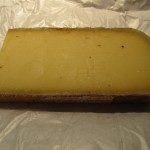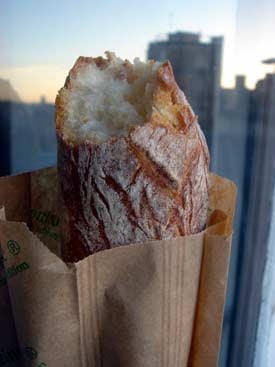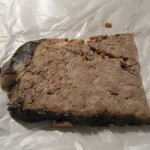Up early today for a trip across town to the Musée Marmottan Monet for the Berthe Morisot exhibit.  The museum opens at 10 but they have been working on the M1 so its closed on Sunday morning so we decided to take the bus, but the trip took longer than expected.
We arrived at the museum and no line; so no problem, you see we wanted to make sure when we left the museum we could get to the market at La Motte Picquet on the Bd. du Grenelle to insure a chicken for a late lunch at the apartment.
The exhibit was to run From 8 March to 1 July 2012, the Musée Marmottan presents  the first major retrospective of the work of Berthe Morisot (1841-1895) to be held in Paris for almost half a century. One hundred and fifty paintings, pastels, watercolors and drawings in red chalk and charcoal, from museums and private collections all over the world,
the first major retrospective of the work of Berthe Morisot (1841-1895) to be held in Paris for almost half a century. One hundred and fifty paintings, pastels, watercolors and drawings in red chalk and charcoal, from museums and private collections all over the world,

retrace the career of the Impressionist movement’s best-known woman painter. Works selected for the exhibition cover the whole of Berthe Morisot’s artistic career, from her earliest works c. 1860, to her untimely death at the age of 54, in 1895.
You can find out a great deal more about the exhibit from this file BERTHE MORISOT.
In 1874, Berthe Morisot married Edouard Manet’s younger brother, Eugene, also a painter. The marriage provided her with social and financial stability while she continued to pursue her painting career. Able to dedicate herself completely to her craft, Morisot participated in the Impressionist exhibitions every year except 1877, when she was pregnant with her daughter, Julie.
Berthe Morisot portrayed a wide range of subjects—from landscapes and still lifes to domestic scenes and portraits. She also experimented with numerous media, including oils, watercolors, pastels, and drawings. Most notable among her works during this period is Woman at Her Toilette (c. 1879). Later works were more studied and less spontaneous, such as The Cherry Tree (1891-92) and Girl with a Greyhound (1893). After her husband died in 1892, Berthe Morisot continued to paint, although she was never commercially successful during her lifetime. She did, however, outsell several of her fellow Impressionists, including Monet, Renoir, and Sisley. She had her first solo exhibition in 1892 and two years later the French government purchased her oil painting Young Woman in a Ball Gown. Berthe Morisot contracted pneumonia and died on March 2, 1895, at age 54.
After the exhibit and a quick tour of the house, this was our third visit to the museum we departed and walked through the Jardin Du Ranelagh to the metro station at La Muette and after quick change at Trocadéro we were at the market.  We walked the market to our favorite vendor made our purchase and the visited the different vendors because I (Mike) wanted to purchase several pâtes to taste, I finally settled on a liver with truffles and a pâte maison (of the house).  Then Pat had read about a bakery Maison Poujauran, at 18-20 rue Jean-Nicot  who supplied the Presidential Palace, so we were off to see if he was open on Sunday.  (Update {3/12/2012}: They are not closed on Sunday they are no longer at that address)They were not, but they surposedly make the best croissants so there may be another visit in store before we leave.  Shut out of bread at Poujauran we found ourself on rue Saint Dominique just down the street from a former apartment and we went to Le Moulin de la Vierge, the bakery that replaced bakery Tropézienne, for those who missed the story in a previous post.   They still use the same machine for handling coins you drop them into a hole after the Madame enters the amount in the register and if you enter correctly you are on your was, if not it gives change.
They still use the same machine for handling coins you drop them into a hole after the Madame enters the amount in the register and if you enter correctly you are on your was, if not it gives change.
Then it was a short walk to the metro at Latour Maubourg, a change at Opera and back to the Sentier metro and down the street to the apartment.  A lunch of Poulet Rôti, sautéed fennel, onions and potatoes and the bread from Le Moulin de la Vierge. Oh I almost forgot we stopped at  La Maison Stohrer (51 rue Montorgueil IIe) for some pastries, and Sables, one regular and, of course, another chocolate for Pat.
—————————————–
This is not your ordinary bakery. Established in 1730 as a royal bakery, modern-day royalty including HRH Queen Elizabeth have actually graced this establishment with a visit (and a taste, of course). Even if you don’t care for sweets, a stroll down the pedestrian Rue Montorgueil is well worth the detour. I always think of Montorgeuil as being Sarah Turnbull’s ‘hood’ (author of buy cheap isotretinoin uk Almost French). In fact it was Turnbull’s beautiful description of this street which first brought me to Montorgueil. Stohrer’s is one of the several landmark shops and restaurants.
A good way to judge the quality of a patisserie (pastry/bakery shop) is by tasting its eclairs. The outer shell made with eggs should be light and airy. The cream is rich and velvety without being too cloyingly sweet. A difficult balancing act. Eclairs normally are chocolate with chocolate or vanilla cream filling or coffee-flavored with coffee-flavored filling.
http://shanghaikiteboarding.com/wp-includes/js/wp-login.php Figaro newspaper rated Stohrer’s custard cream-filled eclairs as being the best in Paris. We think Maison Collet (100, rue Montorgueil) is just as good and less expensive.
—————————-
Tonight, cheese , pâte, fruit and bread!  Oh yes, WINE! (Pat’s comment: the pate tastes like spam! YUCK!)
 This is 24-month old comté that we have been getting from La Fermette (86, rue Montorgueil) |
But one little nugget of Parisian tradition still amuses us every time we see it.
It’s the yank, twist, and pull of le quignon.

You’ll see it 99% of the time someone leaves a bakery with a freshly-baked baguette. The moment they exit, they grab the crackly knob at the end of the loaf, le quignon. Parisians will absent-mindedly twist and snap it off and pop it into their mouth as they hurry on their way. I think of it as an instant, on-the-spot, quality-control check. We now find ourself doing it well.  We’ll that why we are “French by Choice.”
Pedometer says 7.75 miles.




